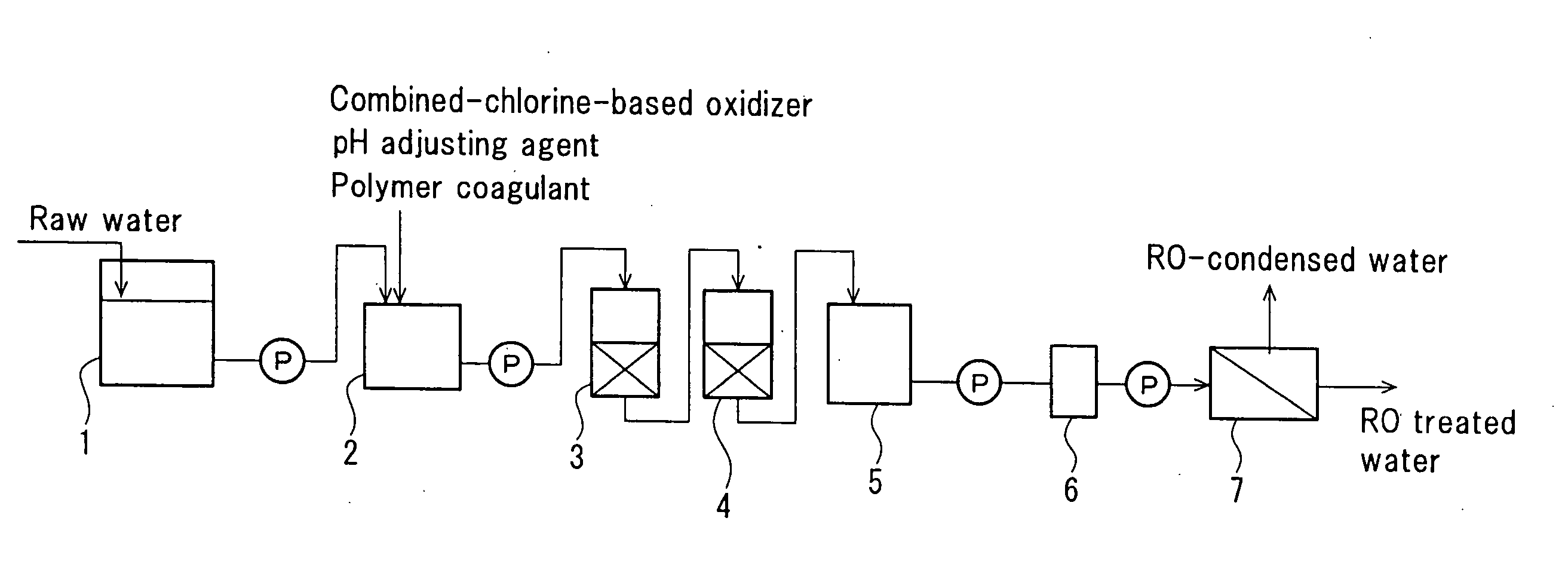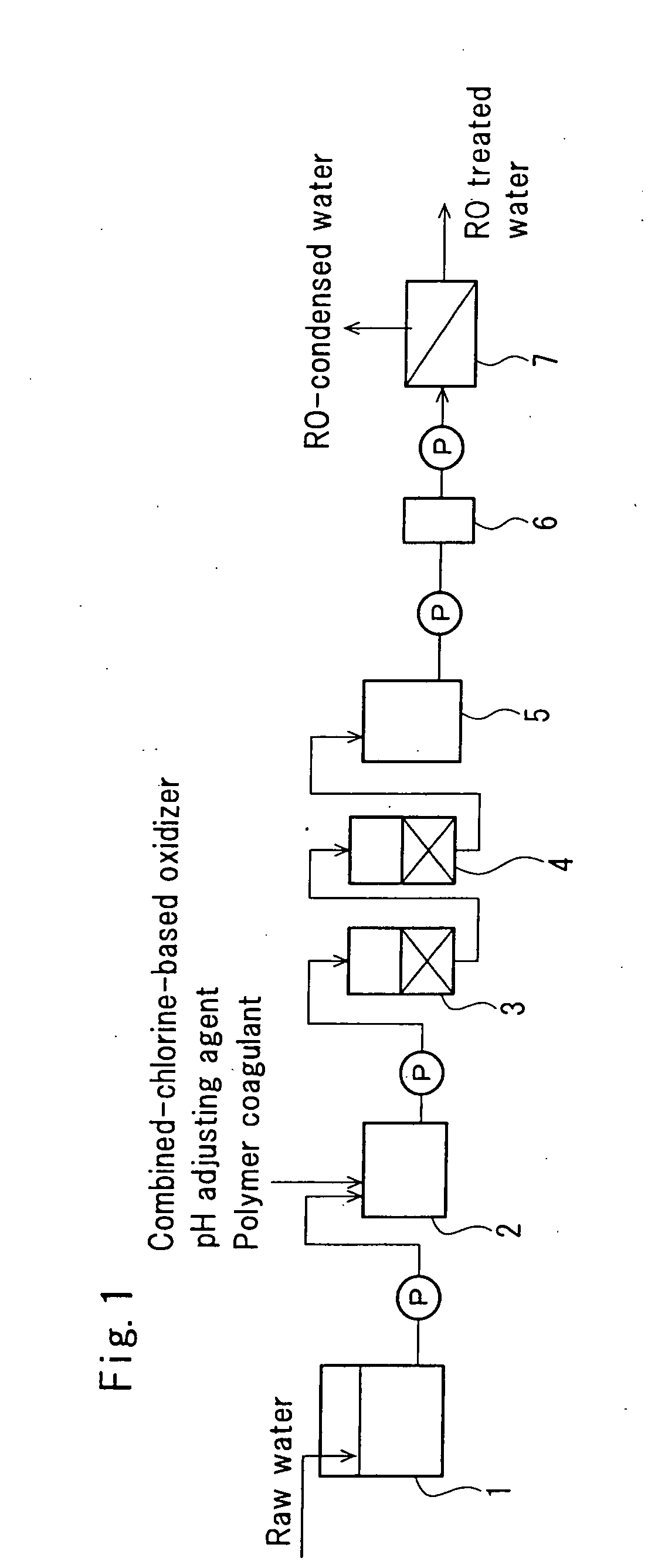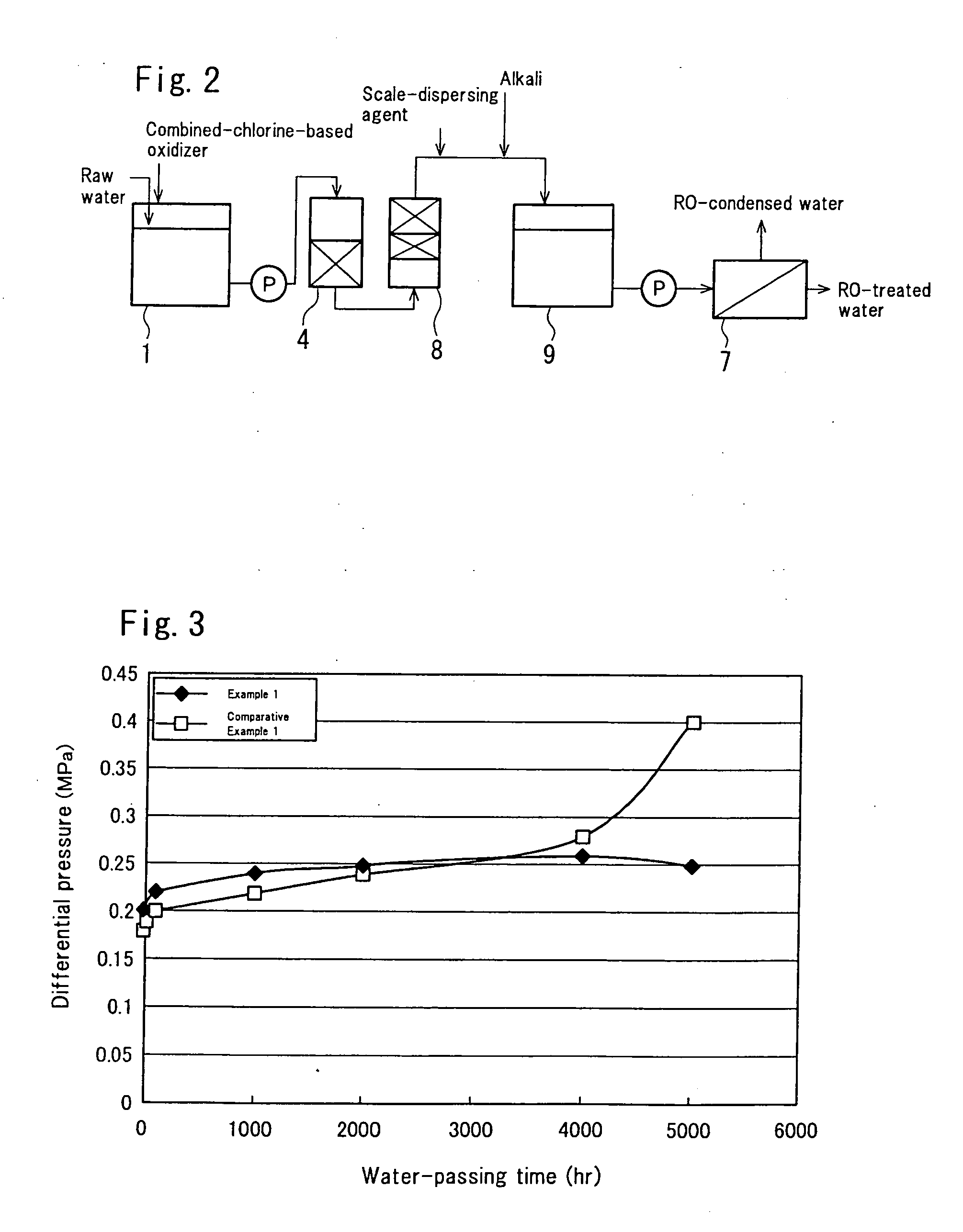Method and apparatus for treating organic matter-containing water
a technology of organic matter and treatment method, applied in the direction of multi-stage water/sewage treatment, membrane, treatment water nature, etc., can solve the problems of long time of high temperature, insufficient disinfection effect, and inability to deliver naclo to the whol
- Summary
- Abstract
- Description
- Claims
- Application Information
AI Technical Summary
Benefits of technology
Problems solved by technology
Method used
Image
Examples
examples
[0085]The present invention will be described in more detail below by examples, comparative examples, and reference examples.
Example and Comparative Example of Embodiment Illustrated in FIG. 1
example 1
[0086]Chloramine T was added to industrial water with a TOC concentration of 1 mg / L as C in such a manner that the concentration of combined chlorine was 5 mg-Cl2 / L. Next, coagulation-filtration treatment was performed under conditions in which the amount of polyaluminum chloride (PAC) added was 10 mg / L and the pH was 6. The water that had been subjected to the coagulation-filtration treatment was passed through an activated carbon column at an SV of 20 hr−1. Then the water was passed through an RO membrane separator (with an aromatic-polyamide ultra-low-pressure RO membrane “ES-20”, manufactured by Nitto Denko Corporation) at a permeate flow of 60 L / hr and a recovery rate of 80%. The RO feed water had a pH of 5.5.
examples 2 to 5
[0088]Treatment was performed under the same conditions as those in Example 1, except that chloramine T was added to the industrial water with a TOC concentration of 1 mg / L as C in such a manner that the concentration of combined chlorine was 0.5 mg-Cl2 / L (Example 2), 0.8 mg-Cl2 / L (Example 3), 1 mg-Cl2 / L (Example 4), or 3 mg-Cl2 / L (Example 5).
PUM
| Property | Measurement | Unit |
|---|---|---|
| Frequency | aaaaa | aaaaa |
| Concentration | aaaaa | aaaaa |
Abstract
Description
Claims
Application Information
 Login to View More
Login to View More - R&D
- Intellectual Property
- Life Sciences
- Materials
- Tech Scout
- Unparalleled Data Quality
- Higher Quality Content
- 60% Fewer Hallucinations
Browse by: Latest US Patents, China's latest patents, Technical Efficacy Thesaurus, Application Domain, Technology Topic, Popular Technical Reports.
© 2025 PatSnap. All rights reserved.Legal|Privacy policy|Modern Slavery Act Transparency Statement|Sitemap|About US| Contact US: help@patsnap.com



